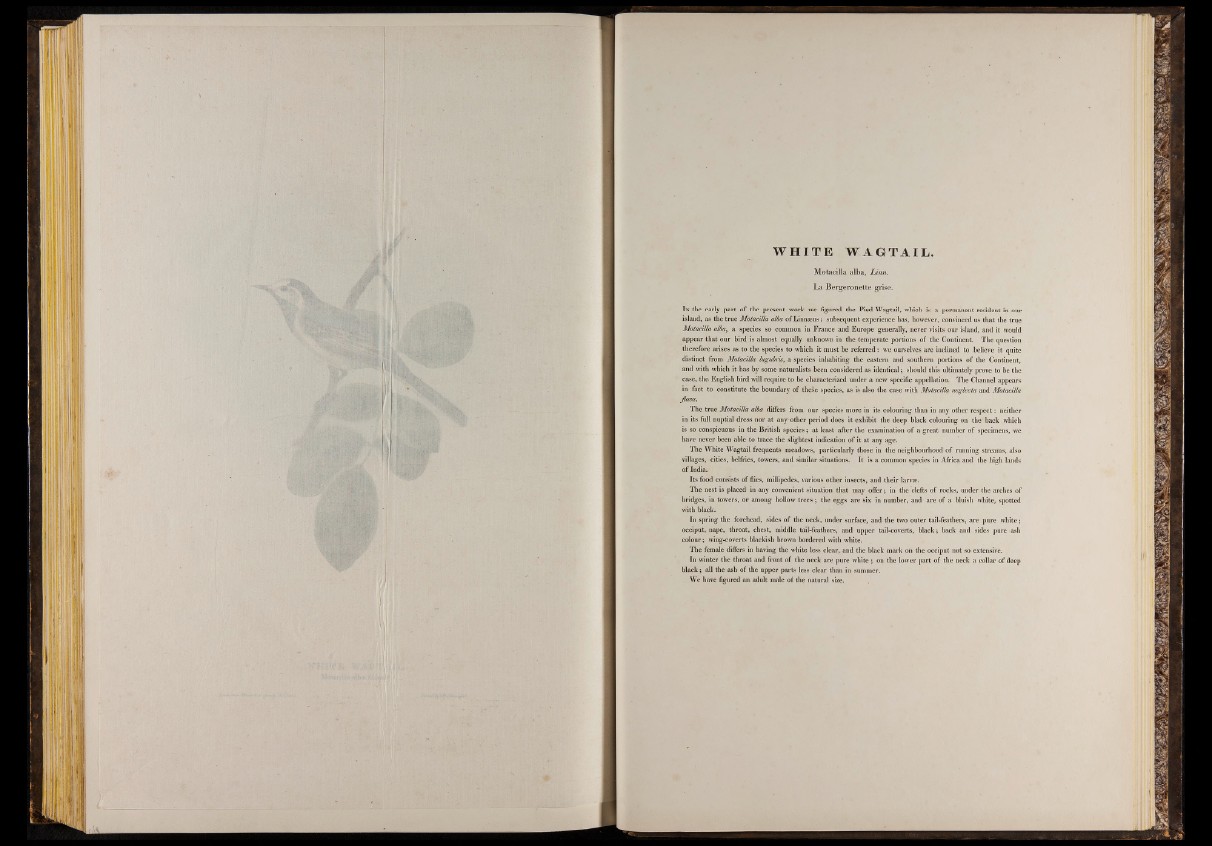
rmnf
■
WH I T E WAG T A IL .
Motacilla alba, Linn.
La Bergeronette grise.
In the early part of the present work we figured the Pied Wagtail, which is a permanent resident in our
island, as the true Motacilla alba of Linmeus: subsequent experience has, however, convinced us that the true
Motacilla alba, a species so common in France and Europe generally, never visits our island, and it would
appear that our bird is almost equally unknown in the temperate portions of the Continent. The question
therefore arises as to the species to which it must be referred: we ourselves are inclined to believe it quite
distinct from Motacilla lugubris, a species inhabiting the eastern and southern portions of the Continent,
and with which it has by some naturalists been considered as identical; should this ultimately prove to be the
case, the English bird will require to be characterized under a new specific appellation. The Channel appears
in fact to constitute the boundary of these species, as is also the case with Motacilla neglecta and Motacilla
flam.
The true Motacilla alba differs from our species more in its colouring than in any other respect: neither
in its full nuptial dress nor at any* other period does it exhibit the deep black colouring on the back which
is so conspicuous in the British species; at least after the examination of a great number of specimens, we
have never been able to trace the slightest indication of it at any age.
The White Wagtail frequents meadows, particularly those in the neighbourhood of running streams, also
villages, cities, belfries, towers, and similar situations. It is a common species in Africa and the high lands
of India.
Its food consists of flies, millipedes, various other insects, and their larvae.
The nest is placed in any convenient situation that may offer; in the clefts of rocks, under the arches of
bridges, in towers, or among hollow trees ; the eggs are six in number, and are of a bluish white, spotted
with black.
In spring the forehead, sides of the neck, under surface, and the two outer tail-feathers, are pure white;
occiput, nape, throat, chest, middle tail-feathers, and upper tail-coverts, black; back and sides pure ash
colour; wing-coverts blackish brown bordered with white.
The female differs in having the white less clear, and the black mark on the occiput not so extensive.
In winter the throat and front of the neck are pure white; on the lower part of the neck a collar of deep
black; all the ash of the upper parts less clear than in summer.
We have figured an adult male of the natural size.